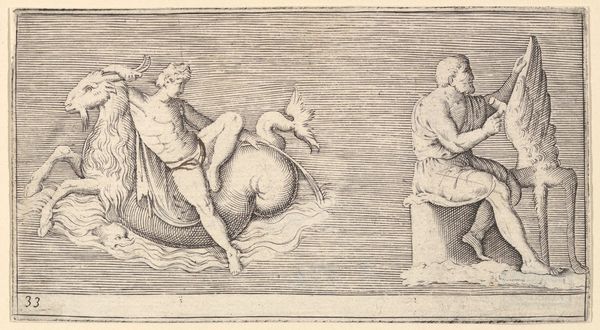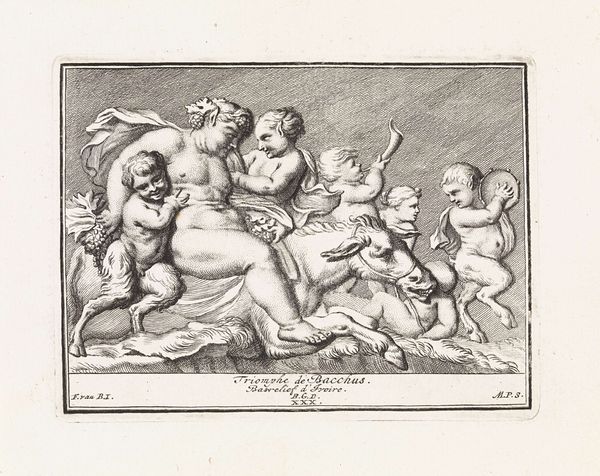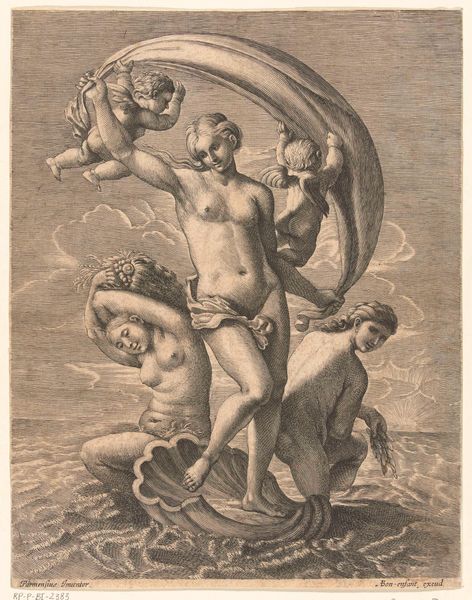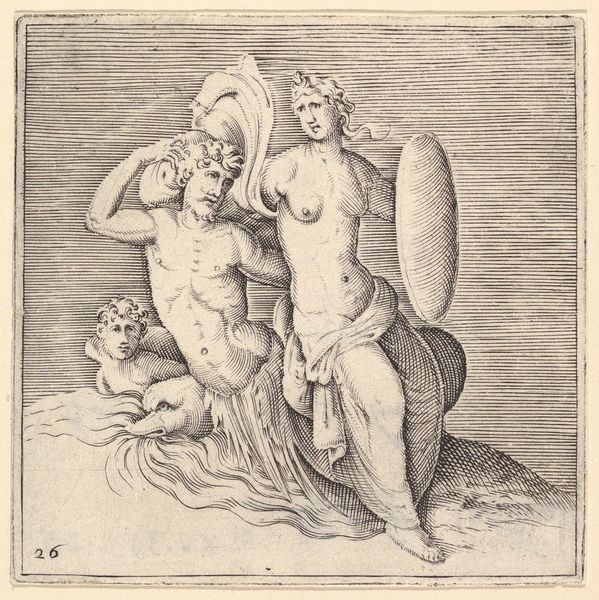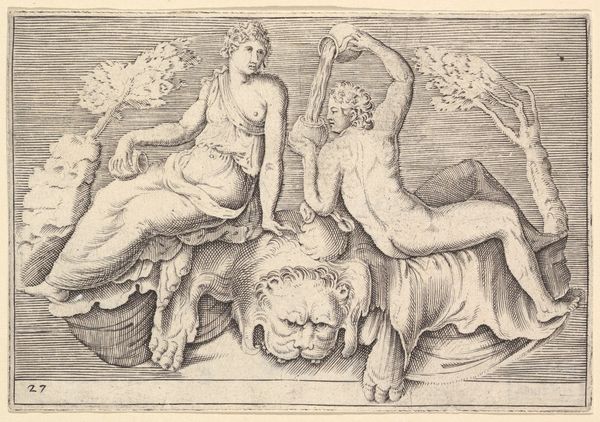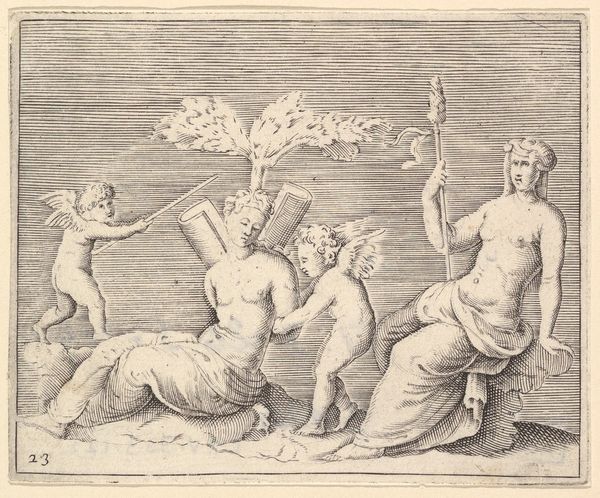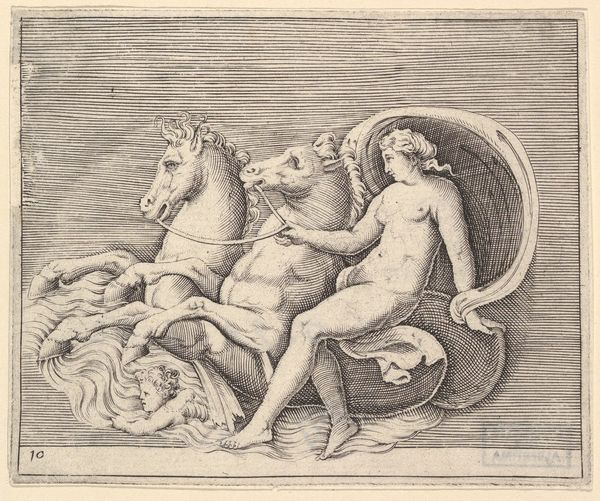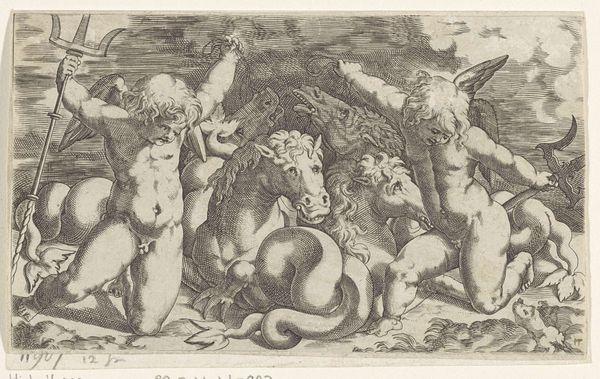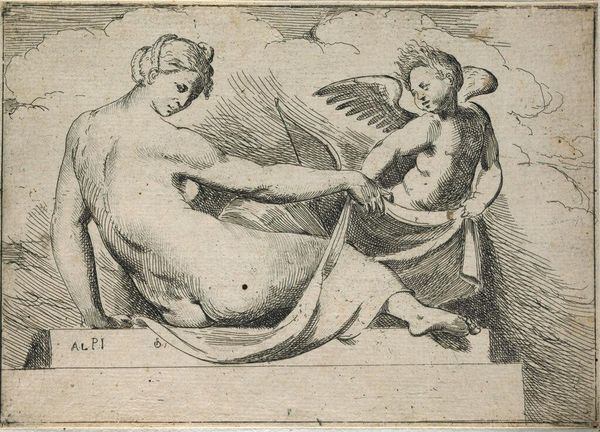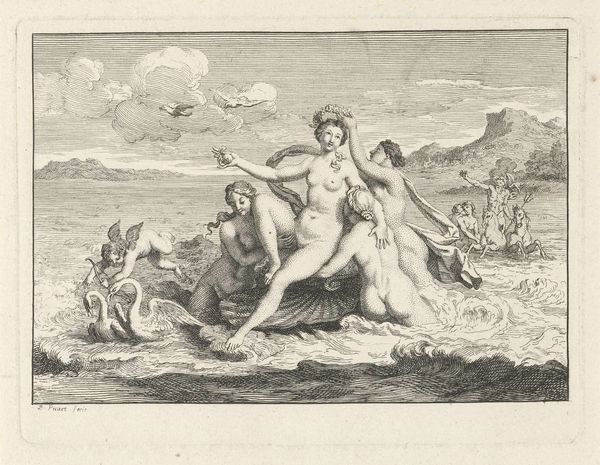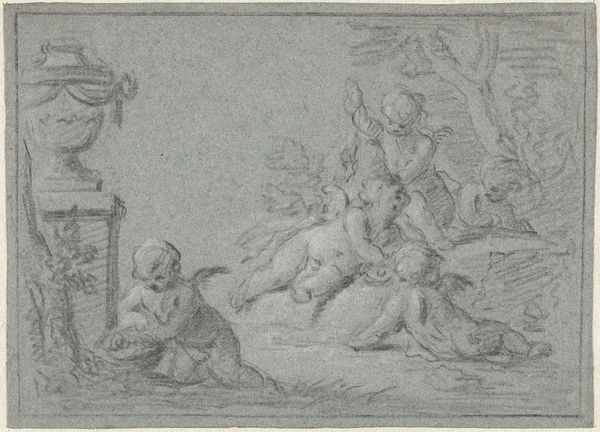
Three Cupids and Two Dolphins, from "Ex Antiquis Cameorum et Gemmae Delineata/ Liber Secundus/et ab Enea Vico Parmen Incis" 1599 - 1622
0:00
0:00
drawing, print, engraving
#
drawing
#
allegory
#
baroque
# print
#
figuration
#
history-painting
#
engraving
Dimensions: plate: 3 7/16 x 4 7/8 in. (8.8 x 12.4 cm)
Copyright: Public Domain
Editor: So, this engraving is called "Three Cupids and Two Dolphins," dating roughly from 1599 to 1622. It's by an anonymous artist, and based on the inscription, it appears to be an engraving after a drawing, and the drawing based on an even older cameo. It gives off this fascinating Neoclassical vibe. What strikes you about this piece? Curator: Well, considering its reproductive function, let’s think about the socio-economic status tied to disseminating imagery at that time. Who commissioned these engravings, and for what purpose? Was it intended for an elite audience of collectors or artists who could afford these kinds of reproductions to inform their own practices, or was its availability and reception more widespread? Editor: That’s an interesting angle! I hadn't considered the accessibility of art back then and how prints like this might democratize access to classical imagery. Does the medium itself—the engraved line—influence our understanding of the subject matter? Curator: Absolutely! The very act of translating three-dimensional form into linear, reproducible marks has significant implications. Consider the labor involved, the skill required to mimic the forms of sculpture, and the way value is created through this repetitive, almost mechanical process. It's also key to look at the types of patronage active during this time and its relation to visual culture and the consumption of art objects. Editor: I see what you mean. It's not just about the image itself, but the whole system of production and consumption surrounding it. So this image is less about ‘beauty’ and more about understanding its place in a wider historical and economic framework? Curator: Precisely. By analyzing the materiality of the engraving—the paper, ink, and the skill of the engraver—and situating it within its social context, we can gain a much richer understanding of its purpose and value. We're focusing on how it was produced and consumed to derive meaning. Editor: Thanks, it definitely changed how I see this artwork! I'll definitely look for this production context more when I'm looking at older artworks. Curator: You’re welcome. I hope our discussion today encourages you and others to consider a materialist perspective when studying and interacting with artworks in the future!
Comments
No comments
Be the first to comment and join the conversation on the ultimate creative platform.
